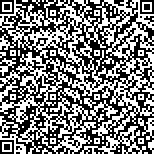| 摘要: |
| 剖碎(Poché)源自古典“重型”结构
体系下的形式设计,研究聚焦于空间与结构关联
性,以古典技法剖碎有关空间操作的线索为实
体切片,描绘西方“重型”结构体在古典布扎系
统向现代转换过程的做法。文章将剖碎作为一
种转化形式语言的工具,从空间秩序与建构逻
辑两个层面展开研究,运用形式分析与类比分
析方法,结合古典与当代不同时期的文献、案例
精读,明确剖碎概念转移至现代的空间特质与
形式生成逻辑,观察、归纳腔体构建与“虚—
实”反转两种设计转换倾向,诠释在当下设计中
提供的可能性,挖掘建筑设计理论指导未来设
计的跃迁。 |
| 关键词: 剖碎 路易斯·康 空间—结构 设计
方法 腔体构建 “虚—实”反转 |
| DOI:10.13791/j.cnki.hsfwest.20230113 |
| 分类号: |
| 基金项目:国家自然科学基金重点项目(52038007);天津市科技
计划项目(20JCQNJC01630) |
|
| Structure-Schema-Form: Exploring the Design Transformation Tendency of SpatialOperation of Poché in Historical Change |
|
SUN Ting,KONG Yuhang,XIN Shanchao
|
| Abstract: |
| This paper explores the issue of spatial operation from the method of Poché. In Beaux-
Arts, in order to seek the order of space, the masonry structure produced surplus structural entities.
The original nature of Poché refers to blackening the part of the entity in the plane or section, which
is a drawing technique to highlight the surrounding structure in Beaux-Arts education. This kind
of drawing pattern itself has formed a unique construction form or image language. This kind of
appended form a certain thickness around the main space, and also achieves the original image of the
service space, and constructs an architectural shaping rule of structural linkage space significantly. It
is worth noting that as a tool for transforming formal language, Poché has undergone transformation
between tradition and era.
In exploring the syntactic logic of form generation and spatial operation, the modernity and
operability of Poché still have the extension and discussion of modern significance. Therefore, this
paper provides new clues, evidence and knowledge based on the existing analysis and thinking
results. In addition to reading literature directly, the research also needs to screen architectural works
with common background, form and mode. In order to improve the accuracy of case-based reasoning
information over a long time horizon, this paper uses the formal analysis method developed based
on the theory of art history to analyze cases in different periods. Poché as a tool for transforming
formal language, is studied from the perspectives of spatial order and constructive logic. By means
of formal analysis and analogy analysis, combined with the architectural literature and case study in
different periods of classical and contemporary times, it is clear that the spatial characteristics and
form generation logic of Poché concept transfer to modern times, and it is observed and summarized
that there are two design transformation tendencies: cavity construction and “Void-Solid” reverse
operation. Explain the possibility Poché provides in the current design, and excavate the transition of
architectural design theory to guide the future design.
The research purpose of this paper is to refine the formal design method, return to the internal
discourse of architecture, and not take it as the historical textual research of teachers, schemes, theories,
etc. Clarify the mechanisms, procedures, examples, forms and other construction tools that repeatedly
appear in architectural works, and then analyze the excitation points that stimulate case formation, result
presentation and design thinking. The concept transformation is not to over-interpret and reshape the
meaning of Poché in the literal sense, but to excavate the classical “space-structure” through the formal
analysis to promote the re-creation method of design, dialectically take the traditional and experiential
architectural design language as a reference, and map the contemporary architectural design to a certain
era of traditional knowledge concepts, technological processes and the reconstruction of the generation
span.
The repeated emergence of Poché in design has realized the evolution clues from the image
expression of spatial organization to the integration of order, functionality, construction methods,
etc., and has become an effective design strategy and approach. It can be clear that, as a unique type
of building, the space operation realized by Poché includes: firstly, preset the building base andboundary as the starting point of design, determine the core space in the horizontal and vertical section, embed the auxiliary function block as the design
target into the internal space of the building, and generate the order and non-grid operation of the volume. Secondly, the building takes three-dimensional
cavity gymnastics as the space shape, which can produce inconsistent gestalt or amorphous form inside and outside, and the entity of continuous space and
the vacancy can be interchanged. Thirdly, considering the scale and daily function, the structure, component scale and construction jointly point to the preset
formal expression, so as to achieve richer spatial intention and precise spatial operation. |
| Key words: Poché Louis Kahn Space-Structure Design Method Cavity Constructing “Void-Solid” Reverse Operation |


